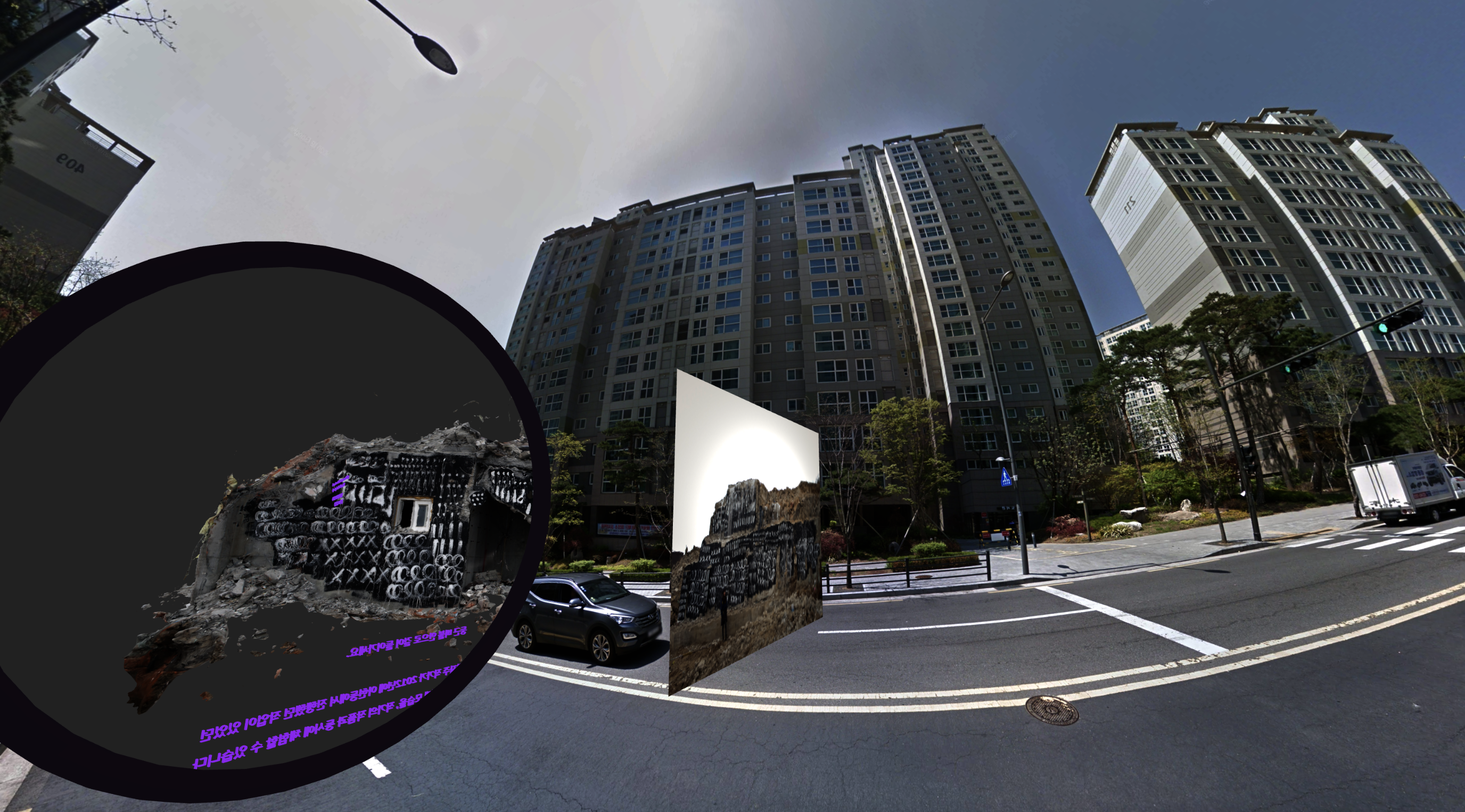Brad Downey, an American artist renowned for his provocative and community-centric works in public spaces, combines a variety of mediums—including sculpture, painting, and installation—to challenge and redefine the boundaries of street and public art. Known for infusing elements of surprise, humor, and critical social commentary into his works, Downey blurs the lines between art and everyday life, often turning ordinary objects into charged symbols of cultural critique. In an era where the distinction between private and public spheres is increasingly ambiguous, Downey's art emerges as a compelling medium for dialogue and reflection. His approach is not only about creating visually engaging pieces but also about sparking interaction and controversy, exploring themes of surveillance, consumerism, and the commodification of public space. Through collaborative efforts, Downey engages directly with communities, transforming public spaces into canvases that challenge societal norms and invite public participation. Today's conversation delves into Downey's motivations for choosing public spaces for artistic expression, the impact of his installations on both the artist and the audience, and the broader implications for society. We explore his innovative use of mundane and mystical elements in projects like the transformation of hospital items into healing amulets at Södertälje Hospital in Sweden, highlighting his unique blend of art and mysticism. Join us as we uncover the layers of intention and reaction that define Brad Downey's dynamic engagement with the urban landscape.

What motivates you to create art in public spaces, and where do you draw your inspiration from? Are there any particular social or political issues that you aim to address through your work?
In recent years, it feels like the concept of public space has undergone a significant transformation. It seems like all aspects of reality are somewhat public now. Our private and public worlds have intertwined. I often feel as though algorithms know my thoughts before I do.
Amidst this loss of privacy, I've been drawn to artistically exploring contact with invisible realms beyond our everyday experiences. This has led me to experiment with rituals, magical gestures, and the creation of specific cult objects or amulets.
For example, I took this approach in a recent public commission from Södertälje Hospital in Sweden. The goal for me as a sculptor was to charge mundane objects from the hospital with some abstract energy and potentially transform those objects into healing amulets. This was conceived for a hospital, so I was trying to make work that might help people heal, or maybe psychologically escape from the hospital briefly."
Your artwork often interacts directly with the public and the urban environment. What has been the most unexpected reaction to one of your installations, and how did it influence your perspective on your work or your approach to new projects?
Most of the unsanctioned work gets destroyed or removed quickly, so I am always pleasantly surprised when an artwork is allowed to stay for longer periods. This is nice because the artwork becomes a kind of meeting point or part of a community. However, in a few cases, I have experienced violent reactions. In some instances, I have even received death threats. The trauma from such reactions can be both disarming and motivating. It’s always difficult to approach these extreme edges of what people are willing to accept. Overall, forcing your art into public spaces can be quite unsettling. It also takes a lot of generosity and detachment to leave artworks around in public and know that the material thing will most likely be destroyed or go missing. As for my approach, it's quite varied, which keeps my prospects open and adaptable.
In your view, what role does art play in society, especially in times of social and political upheaval? How can artists contribute to meaningful conversations and change?
I believe the simple act of nonconformity can disrupt societal standards enough to benefit the general populace. However, with challenges like the housing crisis, a nonconformist lifestyle becomes increasingly difficult. In a recent collaboration with artist Jan Vormann, we came across a news headline that read ‘Russian Teenager Gets Five Years in Prison in Minecraft Terrorism.’ These kids never actually created anything; they were just texting and threatened to blow up an FSB/KGB building in Minecraft. And then one was sentenced to six years in jail. He's 16 years old now. When I read this, I thought it was an example of a thought crime. You have all these conspiracy theories talking about predictive crime with algorithms. And then you read a story like this. It was the first time that I heard of someone being put in jail for merely thinking of doing something. I thought this was a very important story in our times, so I told Jan that we should build this and blow it up, then sell it and give some money to them. We transformed our project into an NFT, with proceeds benefiting the teenager's family and a charity aiding war-displaced families in Ukraine. So, we've contacted the kid’s lawyer, and this money will be waiting for him when he gets out.
What are your thoughts about digital art and digital art platforms?
I see digital platforms as an extension of public space, reflecting the traditional idea of the Internet as a digital commons. Admittedly, the fact that many of these platforms are corporate entities complicates matters, but most physical public spaces are also privately owned.
Currently, the main challenges with digital platforms revolve around technical issues such as loading times.
The most established and developed communities tend to be the most beneficial. Take Minecraft, for example—it's highly adaptable and loads quickly, largely due to its blocky, low-fi aesthetic. However, you still have to buy the game. So, we return to the problem of corporatized space.
How do you see digital art and physical public art interacting or complementing each other in public spaces? Can digital platforms enhance the experience or message of physical public art?
I've explored this concept in various ways. For instance, in December 2020, amid the NFT hype, I envisioned creating a digital artwork to memorialize lost physical artworks.
In another endeavor, I collaborated with techno DJ Albert Van Abbe. The work involved owning and producing illegal drugs; we developed an NFT linked to a self-made physical pill. The buyer was able to purchase the pill in the form of a certificate of ownership NFT gif. The original pills, sculptures made from illegal materials, were archived in a museum collection. Thus, the buyer could own the drugs but could neither possess nor consume them.
Considering the rise of digital art platforms, do you think these platforms can serve as 'virtual public spaces'? How do they compare to physical public spaces in terms of engaging with the community?" How do you think digital art platforms can be used to foster a sense of community and public engagement similar to your interventions in physical spaces?
During COVID lockdowns, Zoom meetings demonstrated how we could meet and effectively discuss things virtually. It also showed us that we were already fully immersed in a kind of metaverse.
For instance, gamified spaces serve as the ideal platform to initiate virtual exhibitions because millions of people are already using them, and they are easily accessible. You can simply download them and start exploring. Therefore, they provided a straightforward way to host a global public exhibition where anyone could participate and navigate, regardless of their familiarity with the platform
How do you envision the future of public art in an increasingly digital world? Do you see digital art as a threat to traditional public art forms, or do you believe there's a synergy between the two?
In most cases, I don’t see these fields as competing; rather, an augmented overlay can enhance the physical world by adding extra information. Over the last few years, Jan Vormann and I have been developing a digital museum concept, envisioning it as a digital overlay where visitors can step back in time, aiming to reintroduce significant ephemeral artworks that have been forgotten, hidden, or destroyed.
We believe that re-experiencing these artworks in an immersive digital format can offer fresh perspectives and inspiration to diverse audiences, updating them for new generations. We also hope that museums, universities, and libraries will integrate these new versions of artworks as educational resources.
What kind of impact do you hope your work has on viewers and on the communities where you create your installations?
I usually try to search for something that the place is missing or needs, like a medicine. But of course, I always hope for inspiration, beauty, and poetry.

